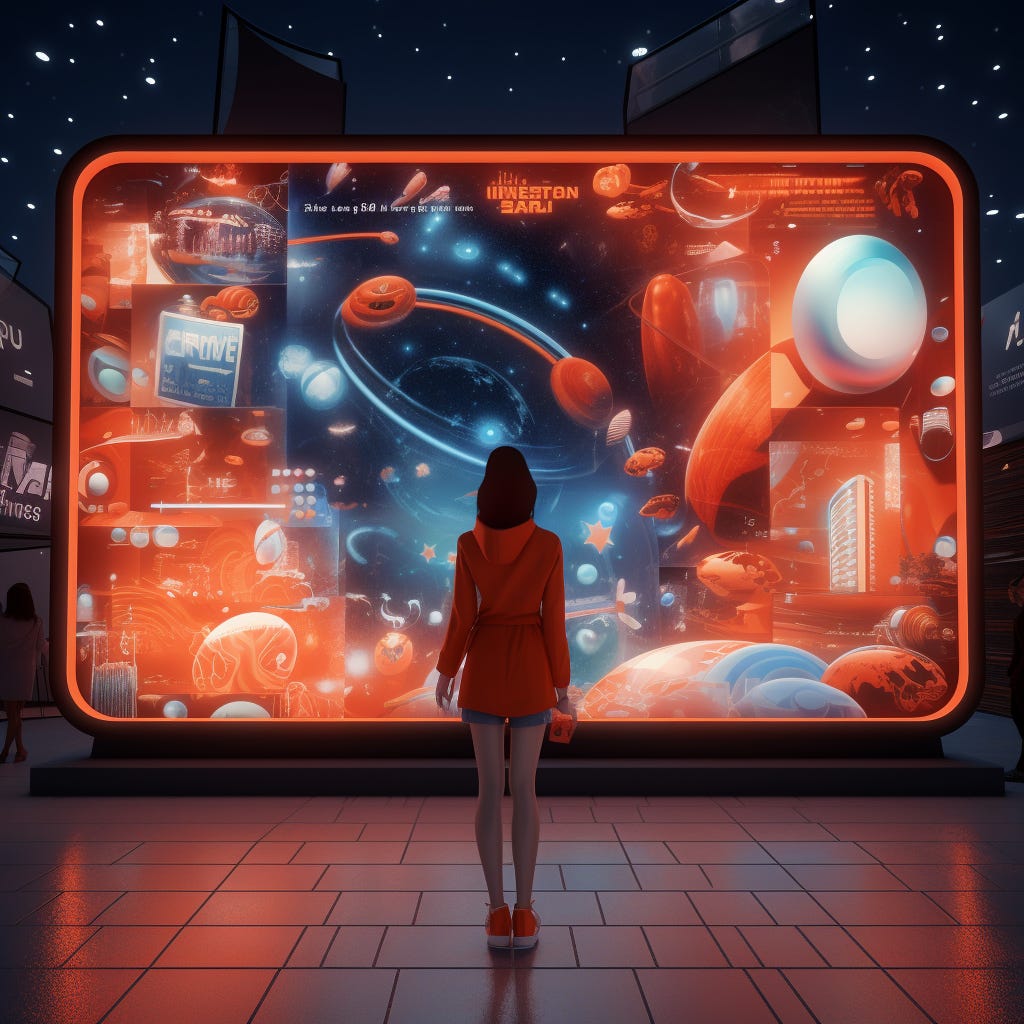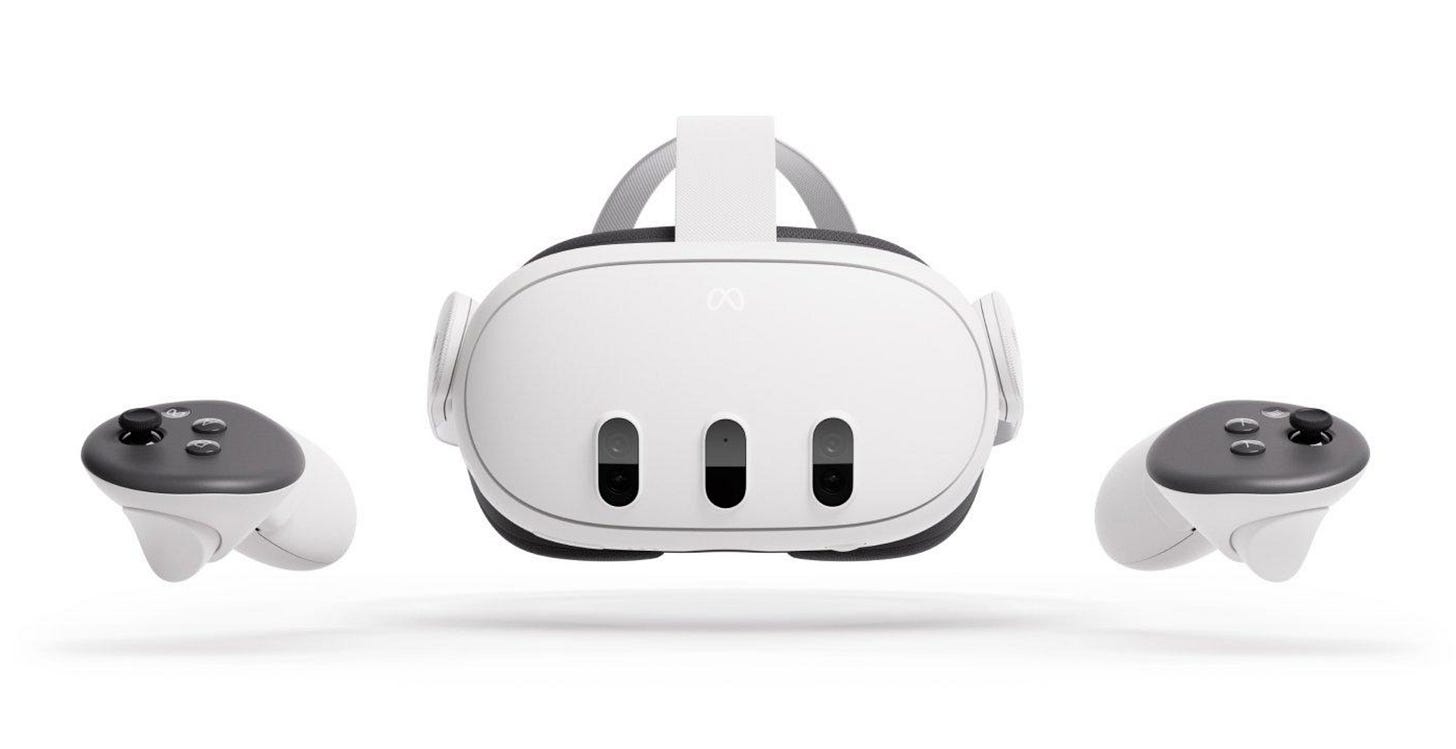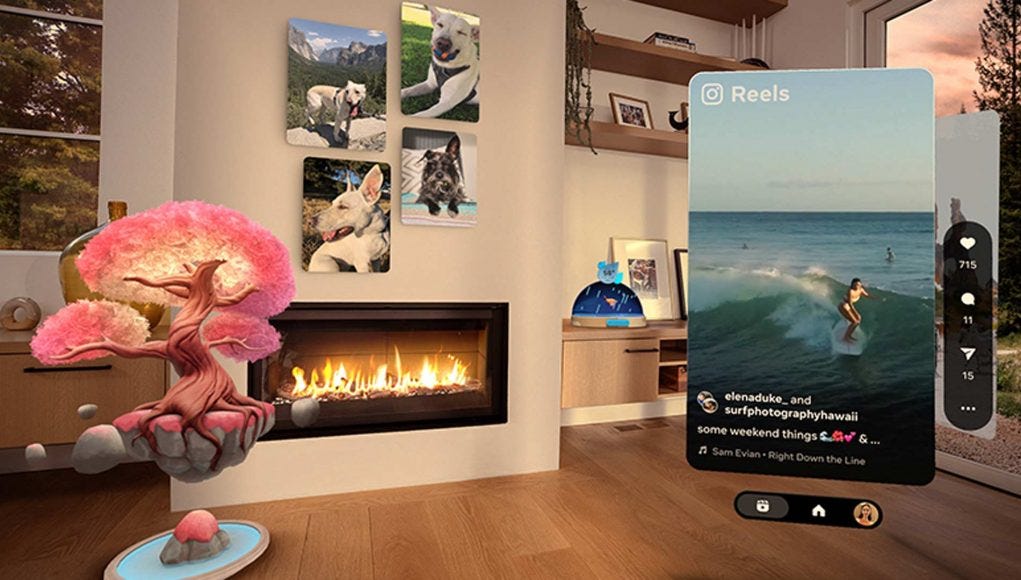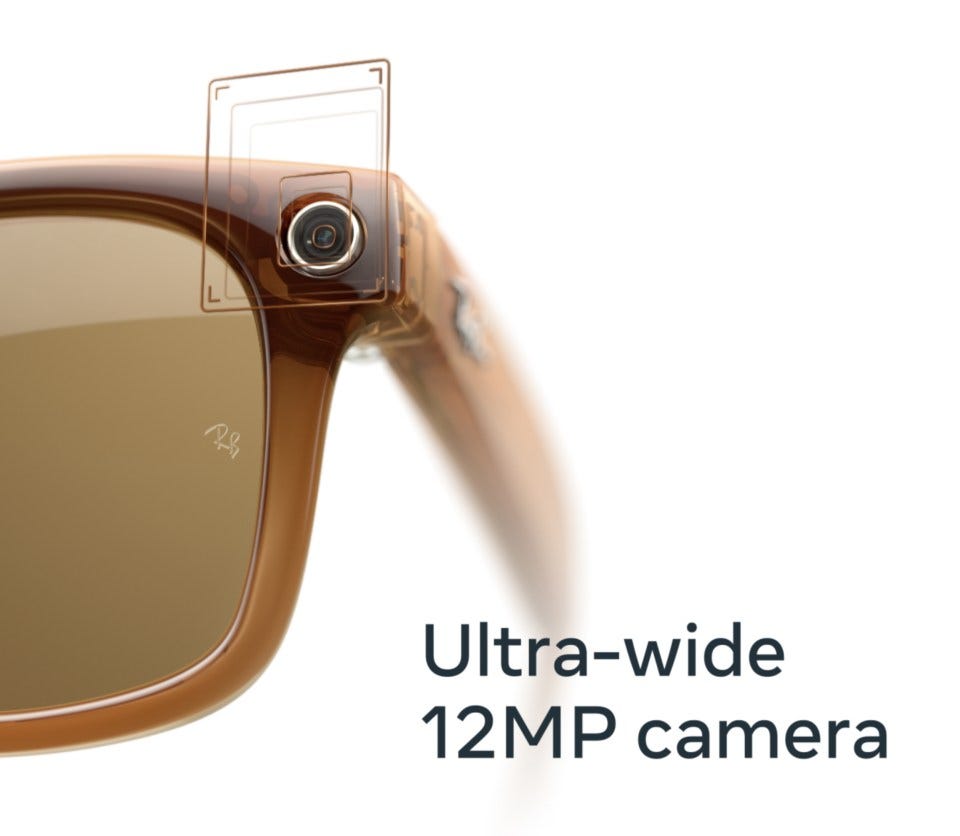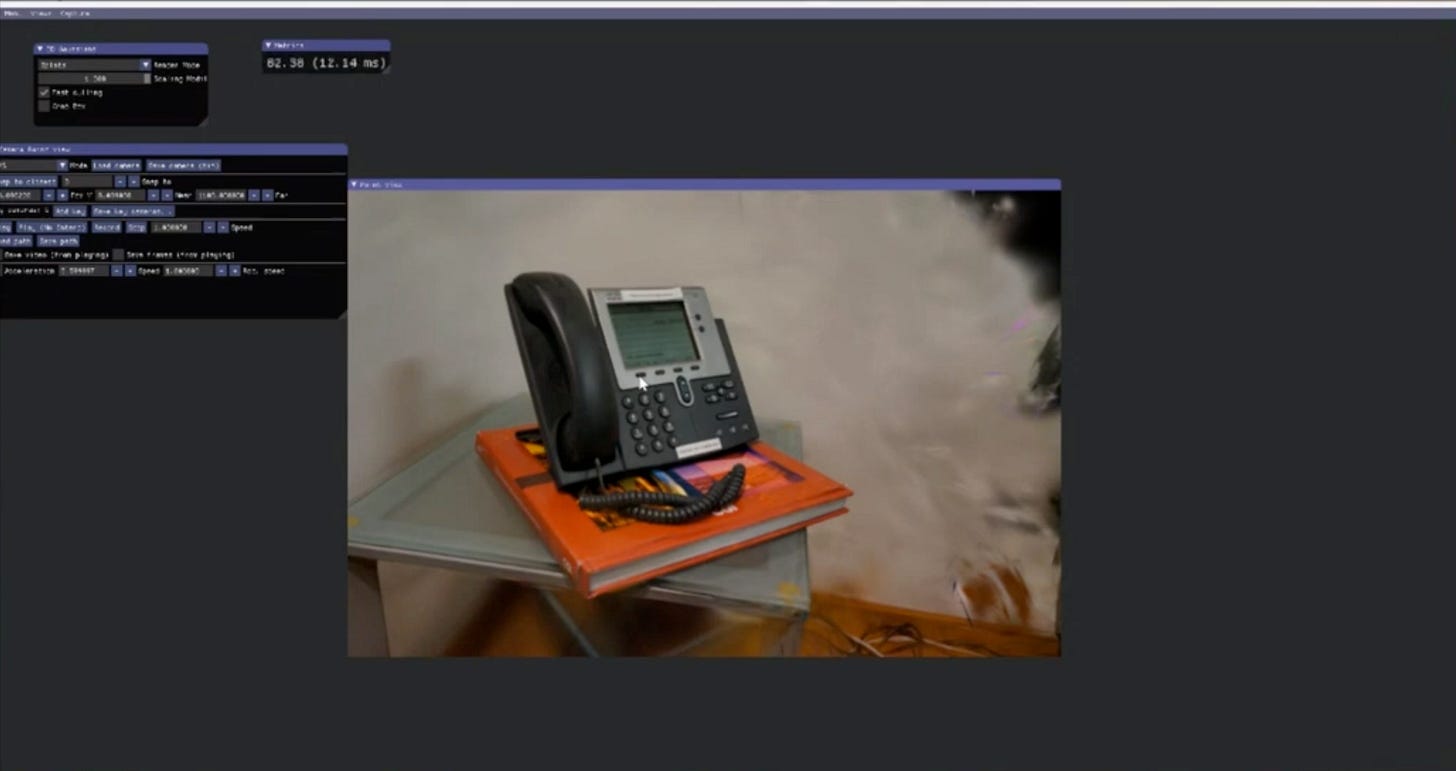Digital Explorers' Diary #56
Today: How do brands advertise in the Metaverse, and Meta Connect conference news!
Welcome to the Digital Explorers' Diary #56!
A curated collection of thought-provoking topics about interactive technologies, AI, web3, sense-making, entrepreneurship, and psychology.
Executive summary:
How do brands advertise in the Metaverse?
Meta Connect news, including the Quest3, RayBan smart glasses, and realistic avatars!
How do brands advertise in the Metaverse?
During a business lunch last week, someone recently asked me: “How do brands advertise in the Metaverse“?
The metaverse?
First, let’s look at the term “Metaverse“ – what do we mean by that? In theory, the Metaverse is where immersive technologies merge with the internet. It’s a collective virtual space that one can access anytime to work, learn, or play.
Let me be clear: the Metaverse does not exist yet. Instead, there are, to this day, a lot of platforms that have the potential to become a Metaverse. What is most likely is we will have many Metaverses, not just one, in the same way that we have many social networks.
These social networks have their different usage and demographics, and similarly, the current Metaverse-to-be platforms have their own characteristics that need to be analyzed. There are virtual world platforms like Roblox, The Sandbox, or Spatial; social games like Pokemon Go; and many custom-made experiences. There are big players in there, of course: Meta has Horizon World, and Microsoft just unveiled Mesh.
For convenience, I will use the word “Metaverse“ to describe all of the above.
Advertising crisis
In 2023, the advertising industry is facing many challenges. Even if regulations on privacy such as GDPR exist, the multipolar trap in place between agencies and ad platforms is in a status quo and is not adapting to the reality of the needs of users and brands. The industry needs trust, privacy, and a new model behind unreliable numbers of metrics and ROI. To dive deeper, see this open resignment article from Arielle Garcia, former Chief Privacy & Responsibility Officer at UM Worldwide.
In contrast, for many users today, the emergence of the Metaverse is a hopeful beacon of trust, respect, inclusivity, and self-expression. The decentralized technologies of web3 and blockchain evoke strong user-controlled privacy; the customizable avatars of the virtual world are a driver of self-expression; the connectivity, community-led, and social-first approach encourages engagement and transcends languages and distances. In short, a Metaverse should be a safe space for everyone.
Metaverse and advertising
A new platform needs new rules for advertising. At the risk of stating the obvious: the Metaverse users don’t want to see traditional advertising like banners or targeted invasive ads.
But if brands allow the user to take control, the impact can be incredible. In the same way that the Barbie phenomenon of 2023 was user-led, carefully crafted Metaverse experiences had great success. In all of them, the user chooses which brand to interact with. As a good use case, we can cite Bomb Pop, a frozen treat brand that sold 20 Million virtual items in Roblox’s Restaurant Tycoon experience.
Whether it’s a custom brand universe, a social media filter, or an augmented reality experience, it’s most often a co-creation between users and brands. Metaverse activations must make sense for everyone, and when they do, they are drivers of brand loyalty and lifetime customer value.
If carefully crafted, advertisement in the Metaverse doesn’t even feel like advertisement; it becomes an experience by itself.
Oh, by the way, if you want to brainstorm this process with me, reach out here or on LinkedIn!
This Week's News:
Last week was the Meta Connect conference, with so much news to share:
The biggest news is the release of the Quest 3. Priced from $500, it’s a very competitive device that might be on the road to becoming the first mass-consumer Mixed Reality headset.
Even if it’s available only on October 10th, I went to a retail store where tethered devices can be tested. The larger field of view and resolution provide a more precise and immersive experience; it’s a considerable upgrade from the Quest 2. I was also able to test the Mixed Reality video passthrough. Obviously, for reasons inherent to the current state-of-the-art passthrough technologies, there are still distortions, visible especially around the hands, and I noticed a constant distortion wave happening when looking very close to some objects. But, other than that, the passthrough is impressive. The colors are good, and the overall scale of the objects feels life-like.
I can’t wait to test it in real conditions! This is an exciting headset.Related: Quest 3 will allow users to anchor apps in their environment, and they will be persistent in place over time. This feature, called Augments, is what I wish Apple would have done and is a pertinent use-case of Mixed Reality. Well done, Meta!
Still leveraging their partnership with RayBan, Meta upgraded their smart glasses. Targeted at social media users and influencers, this wearable includes a camera to live-stream content to Facebook and Instagram and an AI assistant that you can call by saying, «Hey, Meta!»
And then, even if it’s just a technology preview that will take years to reach the consumers, this interview between Lex Fridman and Mark Zuckerberg is impressive. They used real-time AI-generated 3D avatars that require, for now, expensive scanning hardware. And sorry, Lex, but this is not “in the Metaverse“; it’s just an empty virtual world ;-)
From the Podcast
Every week, I’m teaming up with Guillaume Brincin and Sébastien Spas on the Lost In Immersion podcast. This week:
Just before the Meta Quest 3 Release, we discussed our expectations for this headset. See my description above for more, and one of our concerns was addressed: finally, Meta released a device management solution for businesses.
We then discussed the Unity3D pricing updates, explained in an open letter on the Unity blog. They basically reverted to a more transparent and cheaper pricing plan. This is a great move, but unfortunately, the trust is lost… Will Unity survive this?
Guillaume tested for us a few 3D Gaussian Splatting scenes. After a few discoveries and adjustments, he was able to generate a couple of impressive renders… The impact of this technology on virtual experiences and even media production will be huge! It’s a great competitor to Apple Spatial Videos.
Watch the podcast below, and tune in at 10 am UTC on Tuesdays on Twitch, and listen to the podcasts on Youtube, Spotify, Apple Podcasts, Google Podcasts, or Amazon!
Did this newsletter spark some ideas? There are a lot of ways we can work together:
A quick-fire, 30-minute brainstorm with me - book it here!
We can ideate, prototype, and build your experiences - contact us here!

